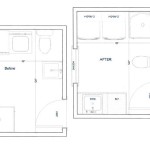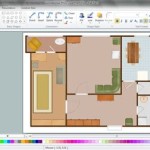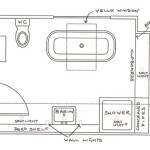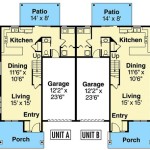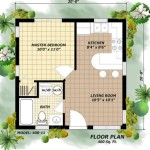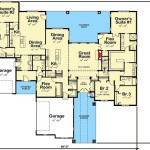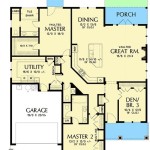Frank Lloyd Wright Floor Plans: Uniting Nature and Architecture
Frank Lloyd Wright, an architectural icon renowned for his groundbreaking designs, has left an enduring legacy through his intricate and innovative floor plans. Wright's masterpieces seamlessly blend with their surroundings, creating a harmonious relationship between nature and architecture.
Central to Wright's design philosophy was the concept of organic architecture, which emphasized the integration of buildings into their natural environment. His homes were not mere structures but extensions of the landscape, echoing the fluidity and balance found in nature.
Organic Flow and Spatial Continuity
Wright's floor plans are characterized by their organic flow and spatial continuity. Rooms transition seamlessly from one to the other, creating a sense of interconnectedness. Curved walls and open spaces evoke a sense of fluidity, inviting inhabitants to move through the home as if it were an extension of the surrounding landscape.
Central Hearths and Living Spaces
In many Wright homes, the fireplace serves as both a physical and symbolic focal point. Central hearths create cozy and inviting living spaces, fulfilling Wright's belief that home should be a sanctuary for the soul. The fireplace becomes a gathering place where families and friends can connect and share stories.
Integrated Outdoor Spaces
Wright's designs often blur the boundaries between indoor and outdoor living. Large windows and patios allow the surrounding nature to flow into the home, bringing light, air, and a sense of the outdoors inside. Terraces and courtyards extend the living spaces beyond the walls, creating a seamless connection between the home and its environment.
Functional and Flexible Spaces
Behind Wright's organic designs lies a strong emphasis on functionality. His floor plans are carefully crafted to maximize space and efficiency. Built-in storage and functional details, such as hidden doors and secret compartments, ensure that every inch of space is utilized. Rooms are often designed to serve multiple purposes, allowing for flexibility in use.
Privacy and Tranquility
Wright understood the importance of privacy and tranquility in home design. His homes often feature secluded nooks and private retreats that offer a sanctuary from the outside world. Wright believed that home should provide a haven for rest and relaxation, where individuals can connect with themselves and their surroundings.
Preserving Frank Lloyd Wright's Legacy
Frank Lloyd Wright's floor plans continue to inspire architects and homeowners alike. His designs have become synonymous with excellence and innovation, and they continue to serve as a testament to his enduring legacy. Preserving and restoring Wright's homes is of utmost importance for future generations to appreciate and learn from his architectural genius.

Frank Lloyd Wright Home Plans Homes

Frank Lloyd Wright Homes Usonian House

Floor Plan The Elam House

Willey Plan Ink Frank Lloyd Wright Foundation

Frank Lloyd Wright House Floor Plans Historic American Homes Brand

Gallery Of Ad Classics Frederick C Robie House Frank Lloyd Wright 9

Three Frank Lloyd Wright Unbuilt Houses Brought To Life As Digital Reconstructions

Frank Lloyd Wright Inspired Home Plan 85003ms Architectural Designs House Plans

Frank Lloyd Wright House Floor Plans Historic American Homes Brand

Gallery Of Ad Classics Frederick C Robie House Frank Lloyd Wright 10

